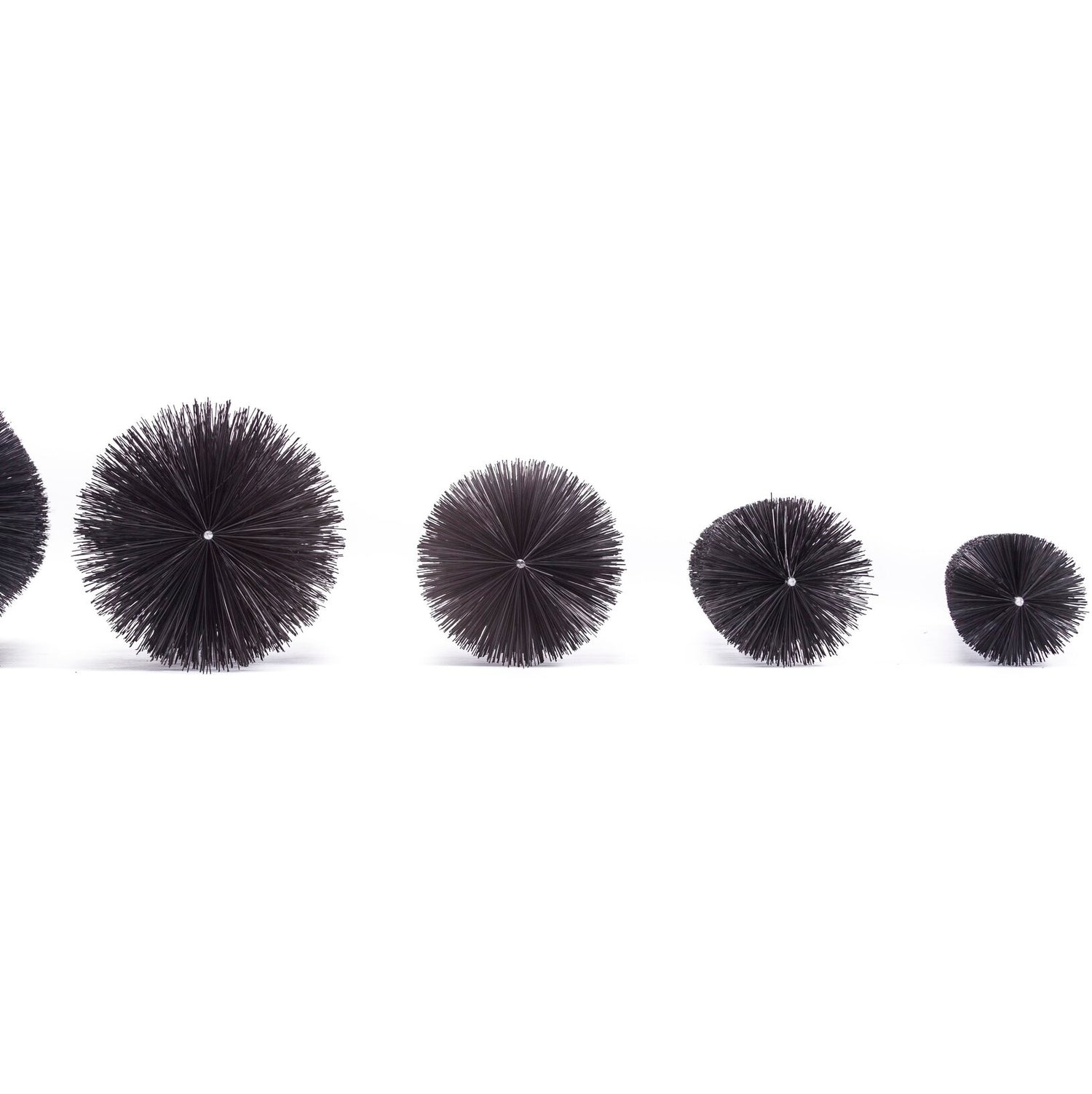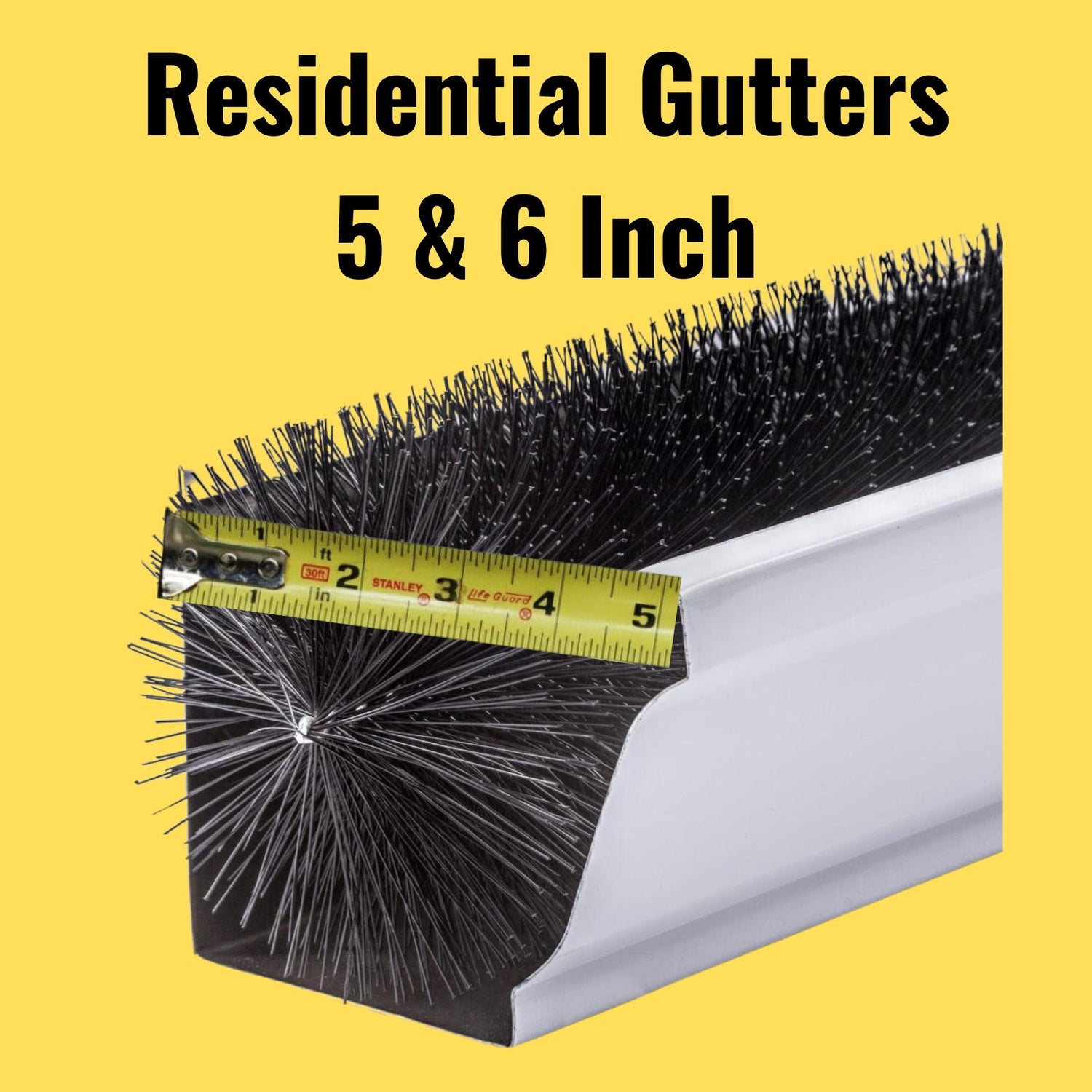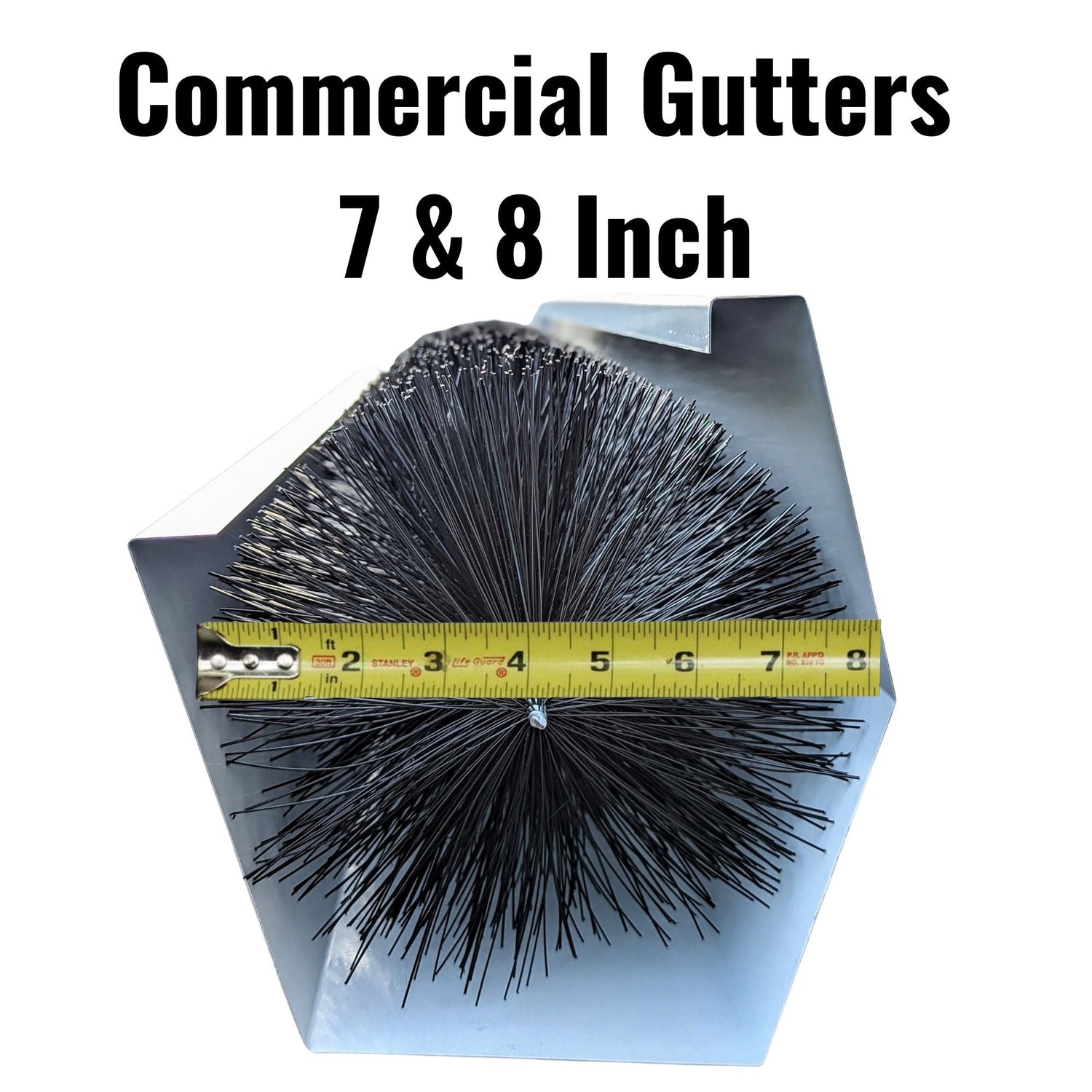Chipmunks are cute, but they can cause serious issues when they make your gutters their home. These small rodents can create blockages, leading to water damage and other problems. This blog will provide you with a comprehensive guide on how to get chipmunks out of your gutter safely and effectively. Additionally, we’ll touch on how GutterBrush can help prevent chipmunks from getting into your gutters in the first place.
Understanding the Problem
Why Chipmunks Choose Gutters
Chipmunks are resourceful creatures that look for safe and convenient places to live, especially in suburban and urban areas where natural habitats are limited. Gutters provide an elevated, secure place away from many ground predators such as cats, dogs, and larger wildlife. This elevation offers chipmunks a sense of security and a safe nesting spot. Additionally, gutters offer protection from harsh weather conditions like rain and wind. The sheltered environment of a gutter can be an attractive spot for chipmunks looking to escape the elements.
Shelter
Gutters often collect leaves, twigs, and other organic materials that chipmunks use to build their nests. The availability of these materials makes gutters an ideal nesting site. The debris in gutters provides a ready-made habitat, reducing the need for chipmunks to gather materials from afar, making the process of nest building much easier. This abundance of nesting materials means chipmunks can quickly and efficiently create a comfortable home.
Nesting Materials
Furthermore, gutters can accumulate seeds, nuts, and other food sources that chipmunks find appealing. Trees that hang over gutters often drop these items directly into the gutter. This proximity to food makes gutters even more attractive to chipmunks. Gutters can also hold small amounts of water, providing chipmunks with a convenient drinking source without having to venture far from their nests. This combination of shelter, nesting materials, and access to food and water makes gutters an irresistible location for chipmunks to set up residence.
Access to Food
This combination of shelter, nesting materials, and access to food and water makes gutters an irresistible location for chipmunks to set up residence.
Issues Caused by Chipmunks in Gutters
While chipmunks may find gutters to be a perfect habitat, their presence can lead to numerous problems for homeowners. Here are the primary issues caused by chipmunks in gutters:
Blockages:
- Nesting Materials: The nests built by chipmunks can consist of a dense collection of leaves, twigs, and other debris. These nests can completely block the flow of water through the gutters, leading to significant drainage issues.
- Food Stashes: Chipmunks often store food like nuts and seeds in their nests. These stashes can add to the blockage, exacerbating water flow problems.
Water Damage:
- Overflowing Gutters: When gutters are blocked by chipmunk nests and food caches, water cannot flow through the downspouts properly. This causes water to overflow from the gutters, which can lead to several types of water damage.
- Peeling Paint: Overflowing water can run down the sides of your house, causing exterior paint to peel and deteriorate, which not only looks unattractive but also exposes the underlying wood to further damage.
- Wood Rot: Continuous exposure to moisture can cause wood rot in fascia boards, soffits, and other wooden structures around your home. This rot weakens the structural integrity of these components and can lead to costly repairs.
- Mold Growth: Excess moisture from overflowing gutters can create the perfect conditions for mold growth. Mold can spread to the interior of your home, affecting indoor air quality and posing health risks.
Structural Damage:
- Chewing: Chipmunks have strong teeth that grow continuously, which they must gnaw on hard objects to keep in check. Unfortunately, this gnawing can damage your gutter system, fascia boards, and even parts of your roof.
- Weakened Gutters: The structural integrity of your gutters can be compromised by chipmunks chewing on them, leading to sagging, leaks, and potential detachment from the house.
- Fascia Board Damage: When chipmunks chew through fascia boards, it can create entry points for water, leading to internal damage and more extensive repairs.
Pest Infestations:

- Attracting Other Pests: The presence of chipmunks and their nests can attract other pests, such as insects and rodents. The food stored by chipmunks can attract ants, beetles, and other insects, while the nests can provide shelter for mice and rats.
- Breeding Grounds: Chipmunk nests can become breeding grounds for insects, particularly if the nests remain damp. This can lead to a significant increase in pests around your home, further complicating pest control efforts.
- Health Risks: Increased pest activity can pose health risks to your family, including allergies and diseases carried by insects and rodents.
Tools and Safety Equipment
Before attempting to remove chipmunks in gutters, ensure you have the necessary tools and safety equipment:
- Sturdy Ladder: A stable ladder is essential for safely accessing your gutters. Ensure it’s on a level surface and secure.
- Gloves: Protect your hands from sharp debris and potential pests.
- Safety Glasses: Shield your eyes from flying debris, dirt, and small particles.
- Gutter Scoop: A small plastic scoop designed for gutters can help you remove debris.
- Bucket: Collect debris in a bucket to avoid making a mess.
- Humane Animal Trap: To safely capture and relocate chipmunks.
- Ultrasonic Repellent: To deter chipmunks from returning.
Step-by-Step Guide to Removing Chipmunks from Your Gutter
Dealing with chipmunks in your gutter can be straightforward if you follow these steps. Proper preparation and safety measures are crucial to ensure the job is done efficiently and safely.
1. Inspect the Gutter
Before climbing up to your gutter, take a few minutes to visually inspect it from the ground if possible. Look for any signs of chipmunk activity, such as nesting materials or chewed areas.
- Identify the Nest: Try to spot the chipmunk nest from the ground. Knowing its exact location will make the removal process easier.
- Check for Additional Debris: Note any other debris that might be contributing to the clog. This could include leaves, twigs, or other objects.
2. Set Up Your Ladder
Safety is paramount when working at heights. Ensure your ladder is stable and secure before climbing.
- Position the Ladder: Place your ladder on a stable, level surface. Avoid soft or uneven ground that might cause the ladder to tip.
- Secure the Ladder: If possible, have someone hold the base of the ladder for additional stability. This can prevent accidental slips or falls.
- Check the Height: Make sure the ladder is tall enough to reach the gutter comfortably without overreaching.
3. Scoop Out Debris
Clearing out the surrounding debris will provide better access to the nest and prevent further clogging.
- Use a Gutter Scoop: A small plastic gutter scoop is ideal for removing leaves, twigs, and other debris. The scoop’s curved shape fits the gutter’s profile, making the task easier.
- Work Carefully: Start from the area closest to the downspout and move towards the nest. This method prevents pushing debris further into the gutter.
- Collect Debris: Place the debris in a bucket or bag to keep the area clean and make disposal easier.
4. Remove the Chipmunks
Once the surrounding debris is cleared, it’s time to remove the chipmunks.
- Set Up a Humane Trap: Place a humane trap near the nest. Bait it with food such as nuts or seeds to lure the chipmunks.
- Wait for Capture: Give the trap some time to work. Check it frequently to ensure the chipmunks are not left in the trap for too long.
- Release the Chipmunks: Once captured, relocate the chipmunks to a safe area far from your home.
5. Flush with Water
After removing the chipmunks and the nest, flushing the gutter with water ensures that no residual debris remains.
- Use a Garden Hose: Attach a spray nozzle to a garden hose and direct the water towards the downspout. Start from the opposite end to push any remaining debris towards the exit.
- Check Water Flow: Ensure the water flows freely through the gutter and downspout, indicating that the path is clear.
- Inspect for Additional Blockages: While flushing, look for any areas where water pools or drains slowly, as this may indicate another blockage.
6. Check Downspouts
Clogged downspouts can cause water to back up into the gutter, so ensuring they are clear is vital.
- Inspect Downspouts: Visually inspect the downspouts to ensure water is exiting properly.
- Clear Blockages: If water is not flowing freely, use a plumber’s snake or a high-pressure nozzle to clear any blockages. Insert the tool into the downspout from both the top and bottom if necessary.
- Repeat Flushing: Continue flushing the gutter with water until you are confident that the downspouts are clear and functioning correctly.
Preventing Future Chipmunk Infestations

Using GutterBrush
GutterBrush is an effective solution for preventing chipmunks from entering your gutters in the first place. It is made from strong, durable materials that withstand harsh weather conditions without containing aluminum or stainless steel. GutterBrush allows debris to enter but prevents clogs by stopping debris from clumping together and blocking water flow.
- Clog Prevention: GutterBrush stops clogs even from small debris, ensuring that water flows freely and preventing issues like peeling paint, wood rot, and bug infestations.
- Water Acceptance: Unlike mesh or micromesh gutter guards, GutterBrush allows water to flow freely, even in heavy rain. This superior water acceptance prevents water damage to your home.
- Easy Installation: GutterBrush is easy to install and requires no special tools or skills, making it a cost-effective and efficient solution for gutter protection.
Additional Prevention Tips
- Trim Overhanging Branches: Trim any tree branches that hang over your roof to prevent chipmunks from accessing your gutters.
- Seal Entry Points: Check your home for any gaps or holes that chipmunks could use to enter and seal them with caulk or steel wool.
- Remove Food Sources: Keep your yard clean and free of food sources like birdseed or pet food that could attract chipmunks.
- Use Ultrasonic Repellents: Ultrasonic repellents emit sounds that are unpleasant to chipmunks, deterring them from your property.
- Install Mesh Screens: Place mesh screens over downspouts to prevent chipmunks from entering through the bottom.
Chipmunks in your gutter can cause significant problems, including blockages, water damage, and structural issues. By following the steps outlined in this guide, you can safely and effectively remove chipmunks from your gutter. Additionally, using preventative measures such as GutterBrush can help ensure that chipmunks do not return. Regular maintenance and inspections are essential to keeping your gutters clear and functional, protecting your home from potential damage.
Key Takeaways
- Identify the Problem: Visually inspect your gutters to locate chipmunk nests and any other contributing debris.
- Safety First: Ensure your ladder is stable and secure, and wear protective gear.
- Remove Debris: Use a gutter scoop to clear surrounding debris for better access.
- Capture and Relocate: Use humane traps to capture and safely relocate chipmunks.
- Flush the Gutter: Use a garden hose to ensure the gutter and downspouts are clear.
- Prevent Future Infestations: Install GutterBrush and follow additional prevention tips to keep chipmunks out.
About GutterBrush
At GutterBrush, we offer innovative gutter protection systems for both Residential and Commercial properties. Our unique brush technology, recognized by Home & Garden TV, The Family Handyman, At Home with Gary Sullivan, and Home Depot, ensures your gutters remain clog free while filtering rainwater, reducing the need to frequently buy gutter guards.
A family-owned company serving American homesteads since 2004, we're proud to have over 1200 5-star reviews, supported by a 10-year material warranty and a 365-day refund policy.




